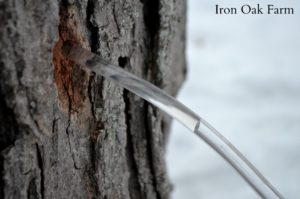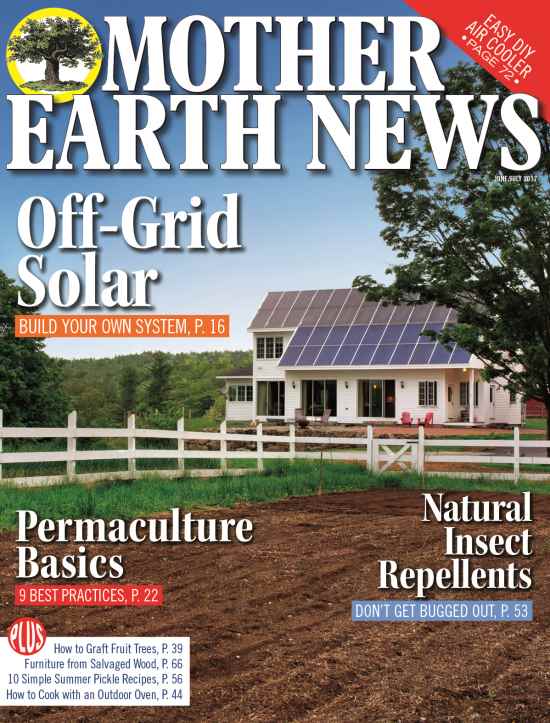
Tapping our Sugar Maple trees is the first sign of spring here on our Michigan farm. It’s always one of those sunny days where everything is dripping. And even though it’s only 45 degrees, it feels like t-shirt weather.
One of these years we will sell our maple syrup. We usually end up with about 2 gallons from our 3 trees and people we know are always wanting to buy it from us. We usually give a lot of it away because we haven’t really wrapped our head around “selling” it as a product, but the potential is definitely there for the future. Especially since there seems to be a growing trend away from white processed sugar. Many people are using maple syrup or honey to sweeten their foods.
How it works

massmaple.org
Maple sugaring is unique to only a certain part of the north-eastern United States and some of the southern parts of Canada. It is here where in the spring, the temperatures fluctuates in just the right way where the sap of the sugar maple flows up and down the tree allowing one to collect it.
The daytime temperature should be above freezing and the night time temperature should be below freezing.
Sugar Bush season is quite short. It starts at the end of winter and lasts until the trees bud. After this time, the sap becomes bitter because the new leaves are using the sugar to grow.
 The sap yields at a 40-1 ratio. Meaning you get 1 gallon of syrup to 40 gallons of sap. Though our trees are a bit sweeter than that.
The sap yields at a 40-1 ratio. Meaning you get 1 gallon of syrup to 40 gallons of sap. Though our trees are a bit sweeter than that.
The collected sap is boiled down until it reaches maple syrup stage which is 219 degrees or 67% sugar.
A gallon of Maple syrup sells for about $60.00
Start up
 One you have the initial equipment the costs after that are bottles, fuel to heat the syrup and labor.
One you have the initial equipment the costs after that are bottles, fuel to heat the syrup and labor.
If you don’t have a lot of Sugar Maple trees on your property, you might have to ask other people and “rent” trees to tap in different areas. Most people are happy to oblige if you promise them a bottle of syrup in the end.
 Wood fueled fires are usually the most economical, especially if you live in the woods. It also gives the syrup a delicious smoky flavor.
Wood fueled fires are usually the most economical, especially if you live in the woods. It also gives the syrup a delicious smoky flavor.
Equipment
Taps (we use plastic tubing, like large aquarium tubing)
 Collection vessels (There are many options for this, we use food grade 5 gallon buckets)
Collection vessels (There are many options for this, we use food grade 5 gallon buckets)
Evaporator (a large vessel to heat the sap, a wide shallow pan works wells)
Fuel (wood is probably the cheapest if you can use what’s on your land)
Bottles
Thermometer/hydrometer
Filters
 Funnels, spoons etc.
Funnels, spoons etc.
Cottage Food Laws
In Michigan you do not need a license to sell honey or maple syrup so long as your gross sales are $15,001 or less. Other than that, the labeling outlines are the same as for other cottage foods. The retail distribution is actually more lenient than other processed foods.

 To learn more about Cottage Food Laws click here.
To learn more about Cottage Food Laws click here.
To learn more about the process of making maple syrup, check out my step-by-step article Sugar Bush Season over at GRIT Magazine
Also check out my other posts on Maple Syruping:
Old Fashioned Maple Kettle Syrup
Maple Sugaring: Spile Free Closed Collection System











1 Comment
Which states are the key producer of Maple trees in USA?